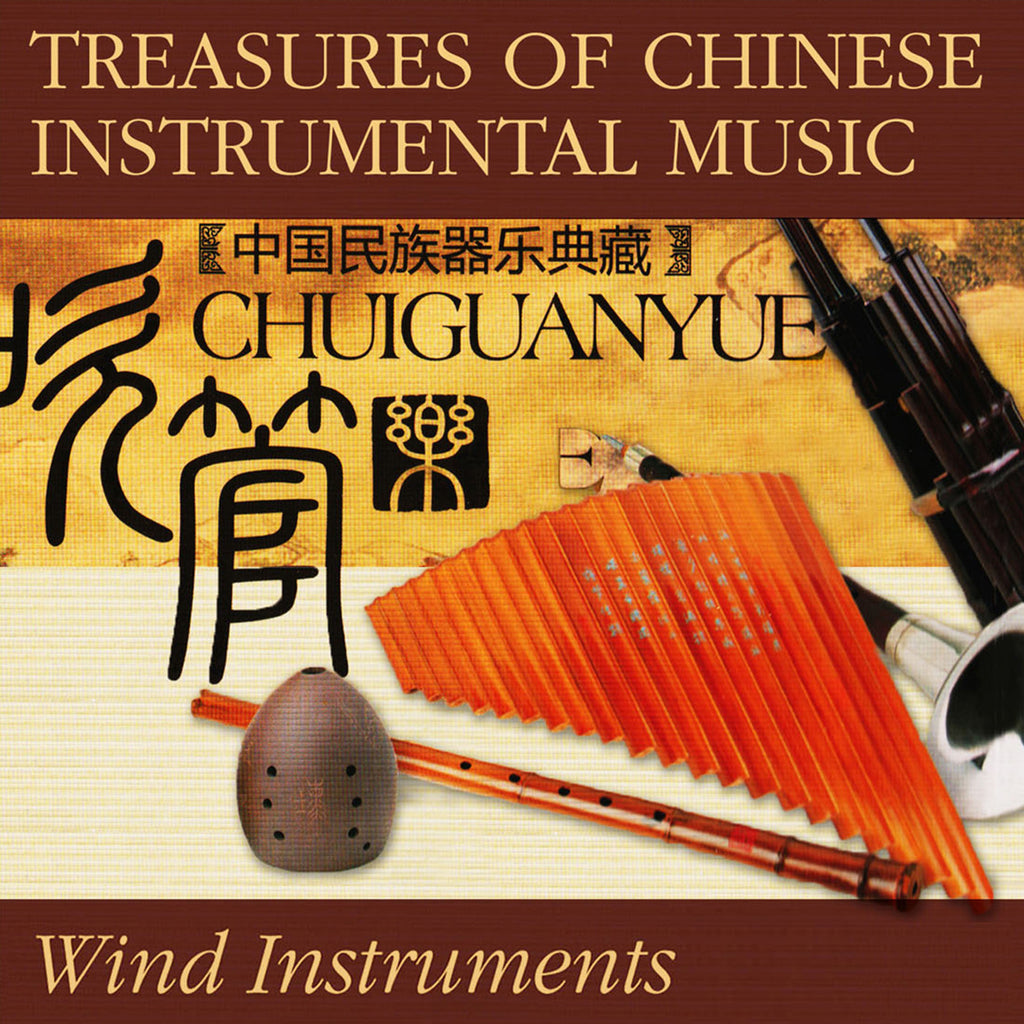
Wind Instruments (Various Artists)
Release Date : September 18, 2012
Catalog : 73197-2
Format : Digital Download (AAC, Mp3)
Treasures of Chinese Instrumental Music is a carefully curated collection that highlights the finest recordings of traditional Chinese instrumental music, spanning from ancient times to the present. This remarkable compilation features rare and previously unreleased performances, including solo, duet, ensemble, and orchestral works by esteemed musicians.
Chinese wind instruments have a long history and are used in traditional, folk, and classical music. Some of the most well-known ones include:
1. Dizi – Chinese Bamboo Flute
2. Xiao – Vertical Bamboo Flute
3. Sheng – Chinese Mouth Organ
4. Suona – Chinese Oboe
5. Hulusi – Gourd Flute
6. Bawu – Reed Flute
| T R A C K S |
VOLUME 1
01. Phoenix Spreading Wings
02. The Dawn Of Hainan
03. A Peacock Displaying His Feathers
04. Congratulating On The Harvests
05. Buddhist Temple
06. Quiet Thoughts
07. Cui Lou Yin
08. Grief Of Parting Crane
09. Remembrance Of The Wind
10. Pastoral
11. Moonlit Night Of Erhai
VOLUME 2
01. Feeding Cattle
02. Tao Jin Ling
03. Tai Huajiao
04. Yu Tune
05. Yue Diao Kai Men
06. Yangguan In Three Tiers
07. Dreamy Cloud And Mountains
08. Grand Prelude
09. River Water
10. Missing
11. Xia Yuzhou
12. The Lark
13. Primitive Hunting
14. Fernleaf Hedge Bamboo Under The Moonlight
15. Little Cabbage
| C R E D I T S |
Executive Producer : Eiichi Naito
Artists + Repertoire, Remastering : Dino Malito






